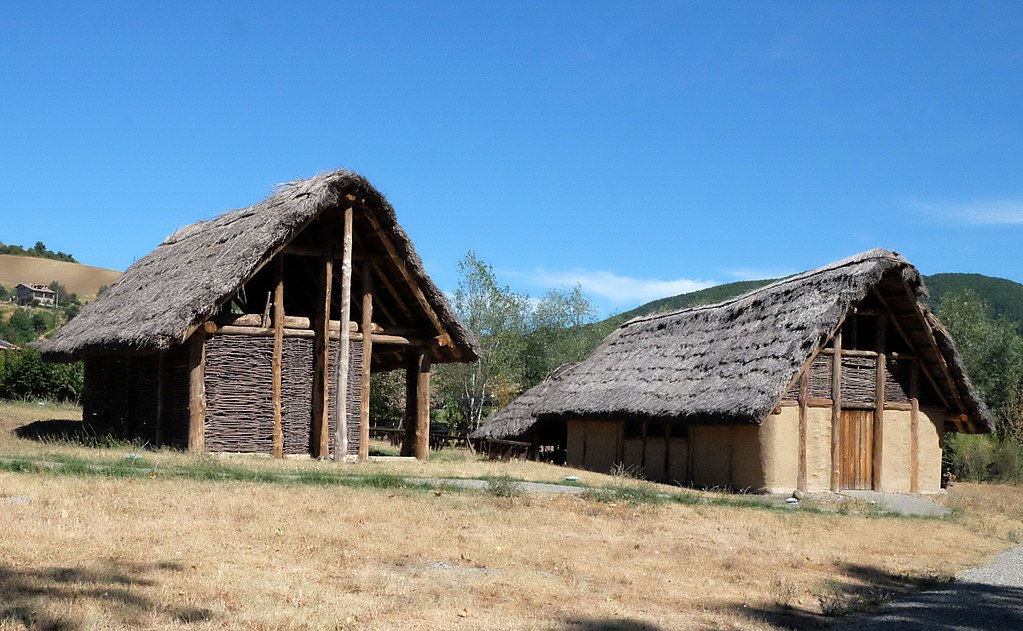The Art of Fire Management in the Ancient Neolithic
Fire has been, since its origins, a central element in human history, a powerful force capable of sustaining life but also of destroying it. Understanding how prehistoric communities interacted with fire is not only an exercise in archaeology, but offers valuable insights into risk management, a highly topical issue in the context of fire prevention. A 2019 study (Dalle fiamme alle ceneri. Un sistema funzionale di gestione del fuoco nella capanna neolitica di Lugo di Romagna – Cultura di Fiorano) by Giuliana Steffè, based on the excavations of the Neolithic site of Lugo di Romagna (Ravenna, Italy) dated to the second half of the 6th millennium BC, offers a unique perspective on this complex relationship.
Lugo di Romagna: an Image from the Past Interrupted by Fire
The excavations in Lugo di Romagna have revealed a well-structured settlement, even equipped with a complex system of fencing. But perhaps the most exceptional data to emerge from these researches is the discovery of an entire hut destroyed by fire and preserved in a primary context of collapse. This circumstance, a sort of “freeze frame” in the life of the hut, has allowed archaeologists to study the housing structure and its contents in detail, offering a rare opportunity to analyze the daily practices related to the use of fire in the Italian Neolithic.
A Functional System for the Management of Fire
The hut, divided into two rooms, was equipped with several structures dedicated to the use of fire: a central hearth, an oven leaning against a wall and a series of small wells dug into the floor and filled with ash. The analysis of their layout and characteristics led the authors to hypothesize the existence of a real “functional system” for the management of fire. This integrated system aimed to exploit fire as a source of heat, lighting and means of cooking food. The key elements of the system included:
- The Central Hearth: Positioned in the center of one of the rooms, it was the main structure for the production of live fire and, crucially, embers. Micromorphological analyses of combustion residues identified the presence of ash deriving mainly from the combustion of wood, but also occasionally from animal dung, and indicated temperatures above 650°C.
- The Oven: Interpreted as a “bread oven”, it was positioned in a corner or against a wall. Its peculiarity lies in the construction technique, which involved the use of a mixture of sand and ash with high refractory properties, and in the way in which it was fueled. Evidence suggests that the combustion chamber was not fueled by open flames, but predominantly (if not exclusively) by live embers produced in the central hearth. This implies a form of targeted heat and fuel management.
- Ash-Filled Pits: These small cavities in the floor, regularly filled with wood ash, have been interpreted as “storage” for embers. The aim was to keep live embers under a layer of compacted ash for days, facilitating the daily rekindling of the fire and reducing the time and energy required to start it from scratch. This practice reflects a deep understanding of the properties of embers and ash to preserve ignition potential.
Lessons for Fire Prevention
Although the Neolithic context is very different from ours, the study of Lugo di Romagna offers relevant food for thought for those who deal with fire management and fire prevention today:
- The Centrality of Management: The discovery of such a structured system underlines how, since the most ancient times, human interaction with fire required active and conscious management. The organization of spaces (central hearth, wall oven) and practices (feeding the oven with embers, conservation of embers) demonstrates an attempt to control a potentially dangerous force within the living space.
- Knowledge of Materials: The selection of refractory materials (sandy-quartz mixture with ash) for the construction of the oven and the use of wood ash for the conservation of embers in the wells highlight a deep knowledge of the properties of fire and the available materials. This empirical knowledge constituted a primitive form of risk mitigation, seeking to confine heat and prolong the usefulness of fire in a controlled manner.
- Inherent Risk: Despite this sophisticated management system, the hut of Lugo di Romagna was destroyed by fire. This archaeological data is a powerful reminder that fire risk is intrinsically linked to the use of fire, even when it is managed within designated structures and with techniques refined by experience. No management system eliminates the risk 100%.
- Resilience and Vulnerability: The destruction of the hut suggests a structural vulnerability or a trigger event that exceeded the fire management capabilities. Studying similar events in the past, even when the specific causes are not always clear, helps us understand the fragility of human structures in the face of uncontrolled fire.
Conclusions
The case of Lugo di Romagna is a remarkable example of how Neolithic communities developed complex systems to integrate the use of fire into everyday life. Analyzing this “functional system” not only enriches our knowledge of prehistory, but offers us a long-term perspective on the human relationship with fire. It shows us the ancient need to manage and control this force to exploit its benefits (heat, light, cooking) while always having to deal with its destructive potential, a potential that, as the destroyed hut demonstrates, could not be completely eliminated. This study reminds us of the historical importance of fire management and reinforces awareness of the intrinsic risk that accompanies its use, a fundamental concept for any fire prevention strategy, yesterday as today.








